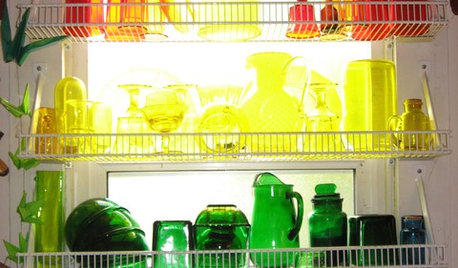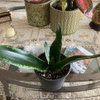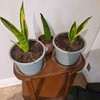Which one is JUST S. trifasciata?
ahelaumakani
10 years ago
Related Stories

KITCHEN DESIGN12 Great Kitchen Styles — Which One’s for You?
Sometimes you can be surprised by the kitchen style that really calls to you. The proof is in the pictures
Full Story
LANDSCAPE DESIGNGarden Overhaul: Which Plants Should Stay, Which Should Go?
Learning how to inventory your plants is the first step in dealing with an overgrown landscape
Full Story
KITCHEN SINKSWhich Faucet Goes With a Farmhouse Sink?
A variety of faucet styles work with the classic farmhouse sink. Here’s how to find the right one for your kitchen
Full Story
FURNITUREWhich Dining Table Shape Should You Choose?
Rectangular, oval, round or square: Here are ways to choose your dining table shape (or make the most of the one you already have)
Full Story
KITCHEN DESIGNOpen vs. Closed Kitchens — Which Style Works Best for You?
Get the kitchen layout that's right for you with this advice from 3 experts
Full Story
KITCHEN ISLANDSWhich Is for You — Kitchen Table or Island?
Learn about size, storage, lighting and other details to choose the right table for your kitchen and your lifestyle
Full Story
KITCHEN DESIGNHouzz Quiz: Which Kitchen Backsplash Material Is Right for You?
With so many options available, see if we can help you narrow down the selection
Full Story
LANDSCAPE DESIGNWhich Pergola Is Right for You?
A covered pergola can increase the time you spend in your outdoor living space. Which covering should you choose?
Full Story
You Said It: ‘Which Color Truly Reflects You?’ and Other Quotables
Design advice, inspiration and observations that struck a chord this week
Full Story









Stush2049 Pitts. PA, zone 6
Tiffany, purpleinopp Z8b Opp, AL
Related Professionals
Comstock Park Landscape Architects & Landscape Designers · Cary Landscape Architects & Landscape Designers · Erie Landscape Architects & Landscape Designers · Jennings Landscape Architects & Landscape Designers · Signal Hill Landscape Architects & Landscape Designers · Bethlehem Landscape Contractors · Berkeley Heights Landscape Contractors · Fort Worth Landscape Contractors · Midland Landscape Contractors · Soddy Daisy Landscape Contractors · West Covina Landscape Contractors · Aurora Window Contractors · Compton Window Contractors · Hilton Head Island Window Contractors · Ruskin Window ContractorsahelaumakaniOriginal Author
Stush2049 Pitts. PA, zone 6
Tiffany, purpleinopp Z8b Opp, AL
roberto2
roberto2